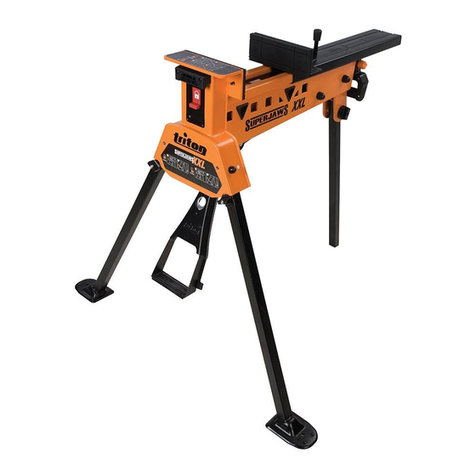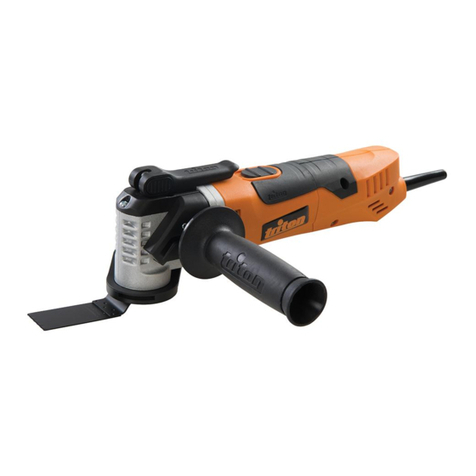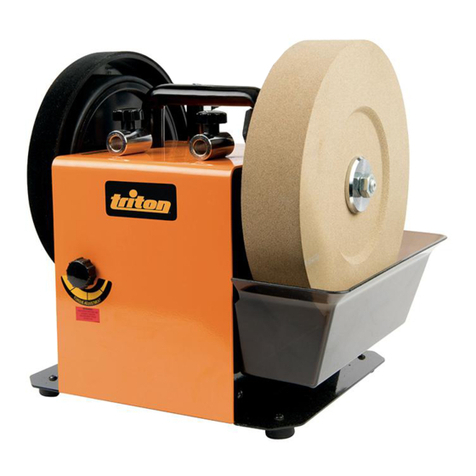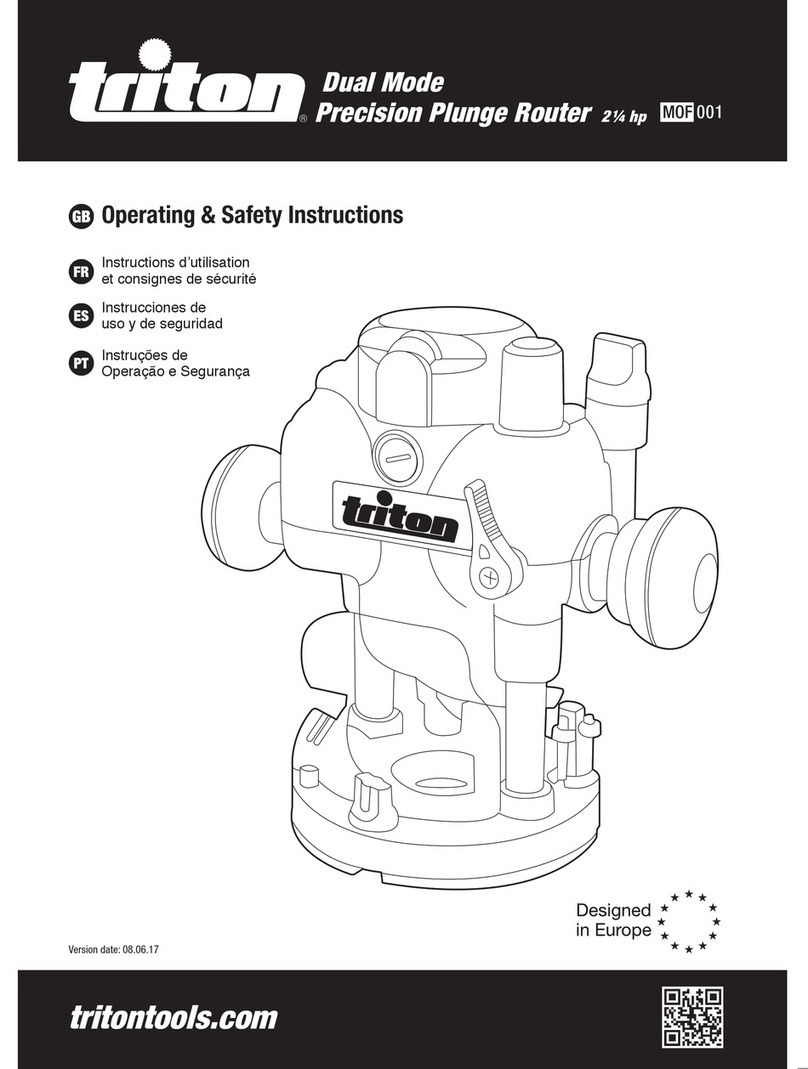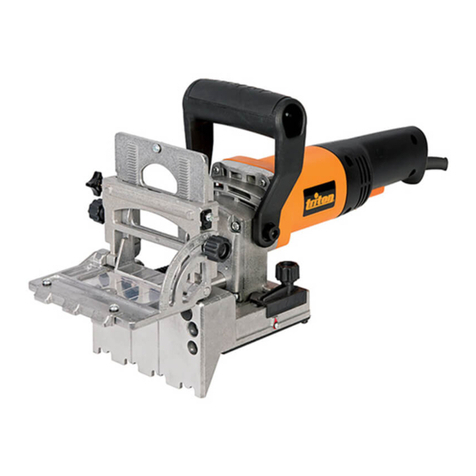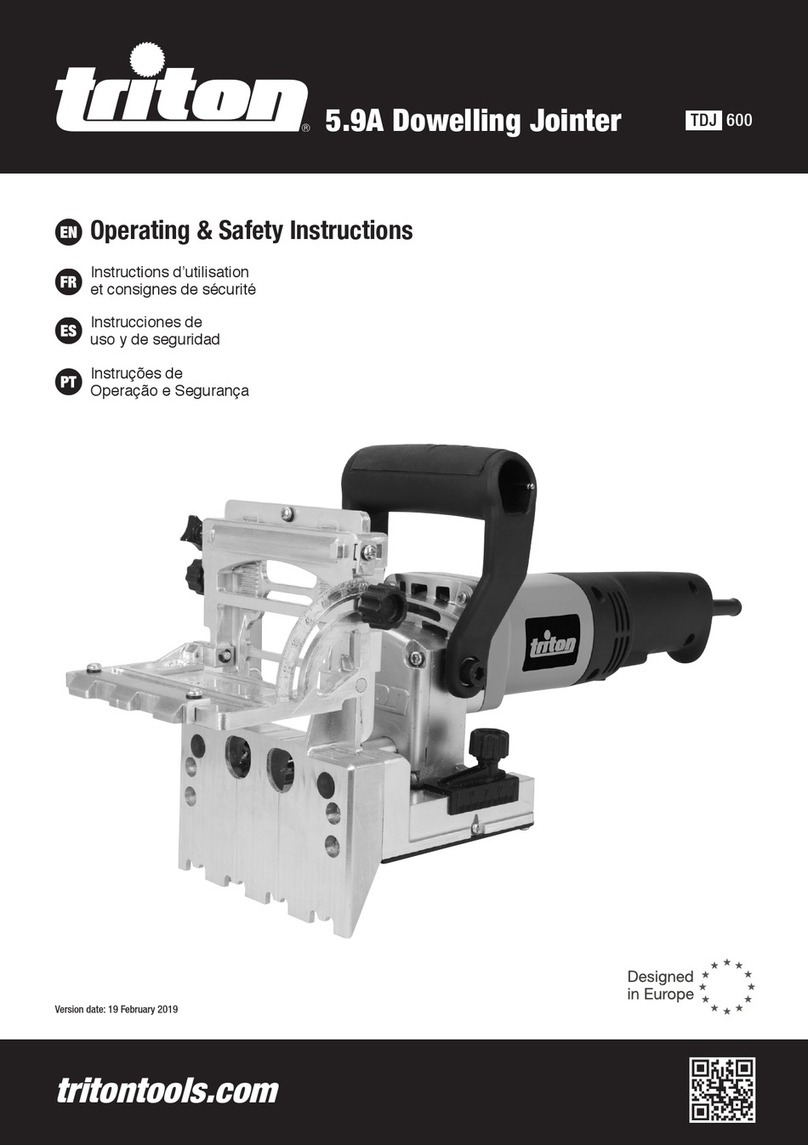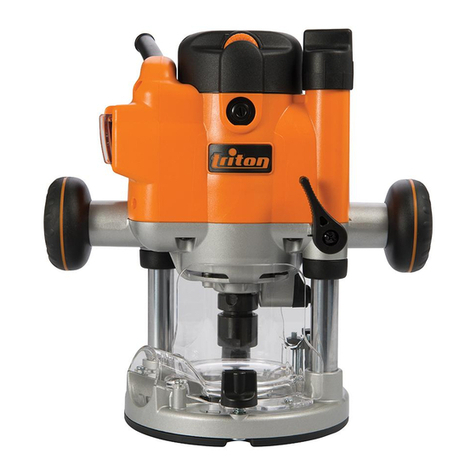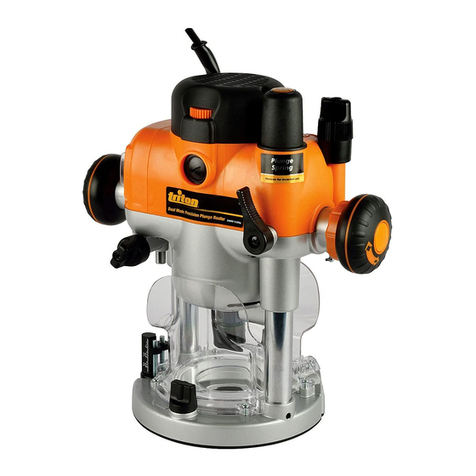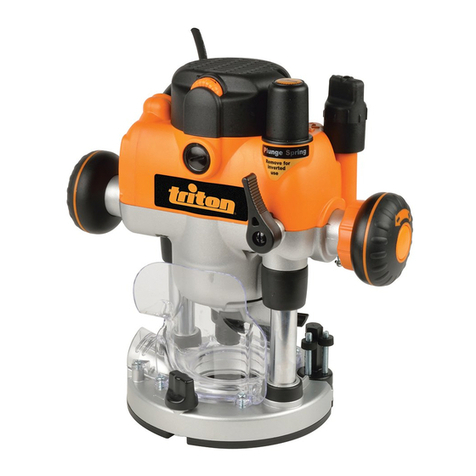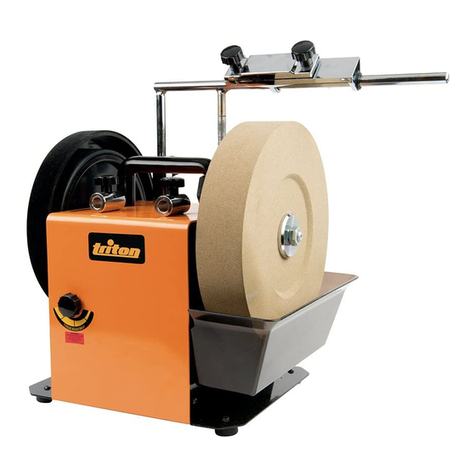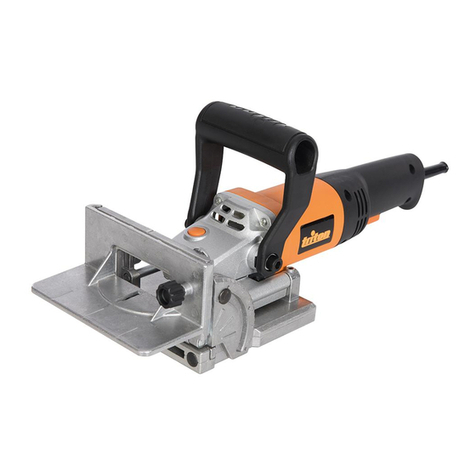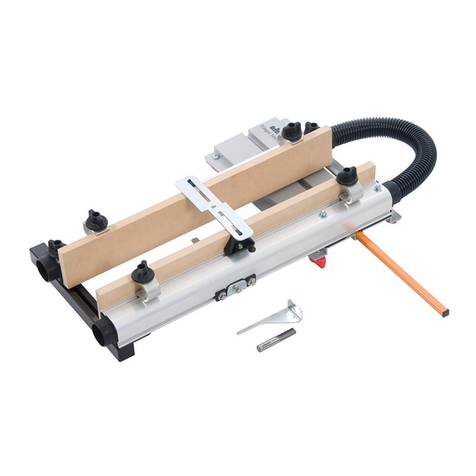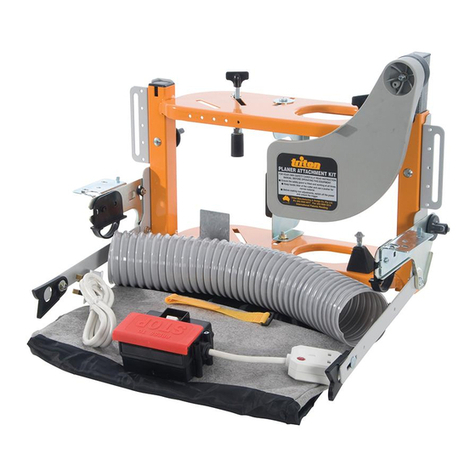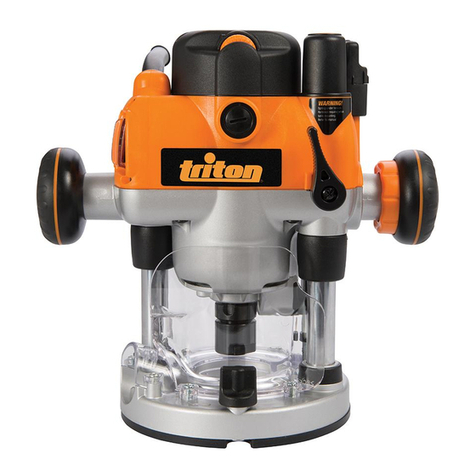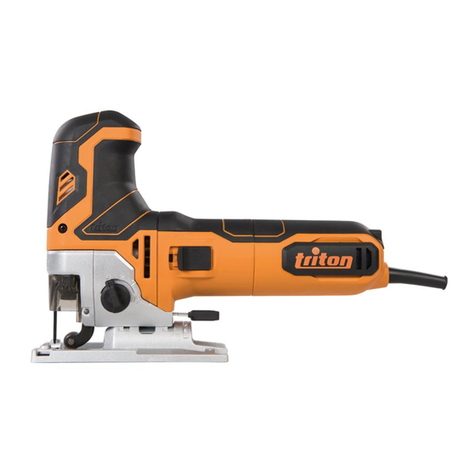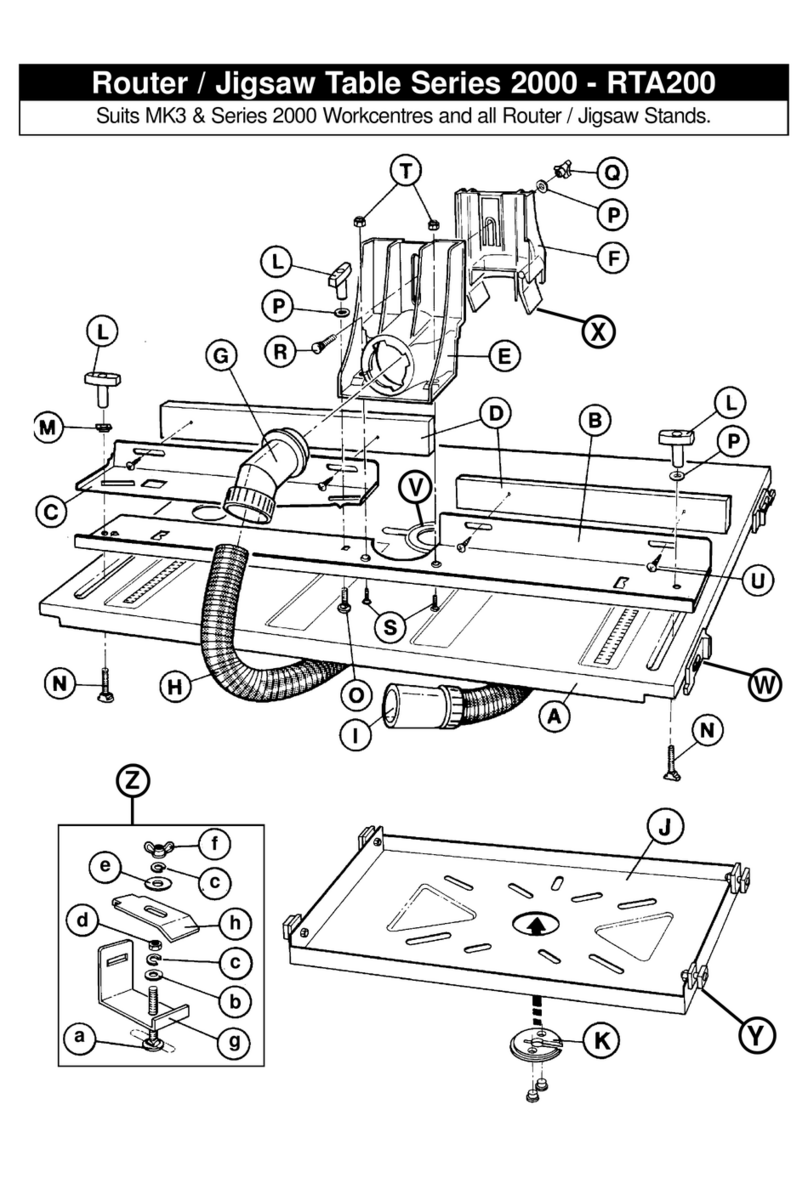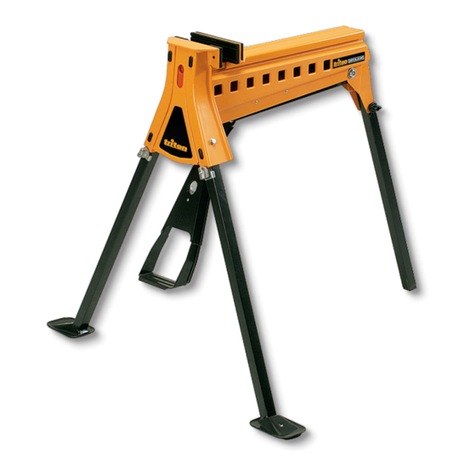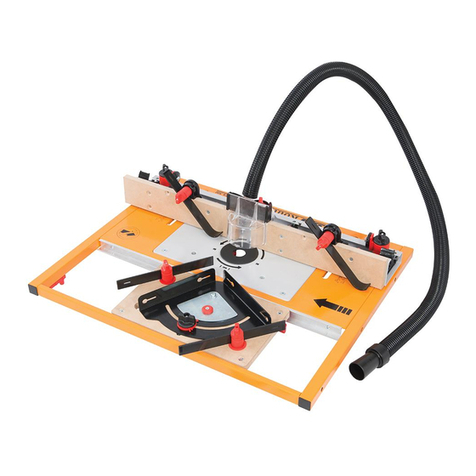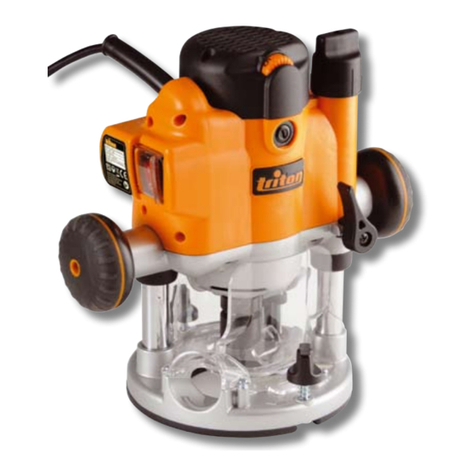
6
3) Personal safety
a) Stay alert, watch what you are doing and use common sense when
operating a power tool. Do not use a power tool while you are tired
or under the influence of drugs, alcohol or medication. A moment of
inattention while operating power tools may result in serious personal
injury.
b) Use personal protective equipment. Always wear eye protection.
Protective equipment such as dust mask, non-skid safety shoes, hard hat,
or hearing protection used for appropriate conditions will reduce personal
injuries.
c) Prevent unintentional starting. Ensure the switch is in the off-position
before connecting to power source and/or battery pack, picking up or
carrying the tool. Carrying power tools with your finger on the switch or
energising power tools that have the switch on invites accidents.
d) Remove any adjusting key or wrench before turning the power tool
on. A wrench or a key left attached to a rotating part of the power tool may
result in personal injury.
e) Do not overreach. Keep proper footing and balance at all times. This
enables better control of the power tool in unexpected situations.
f) Dress properly. Do not wear loose clothing or jewellery. Keep your
hair, clothing and gloves away from moving parts. Loose clothes,
jewellery or long hair can be caught in moving parts.
g) If devices are provided for the connection of dust extraction and
collection facilities, ensure these are connected and properly used.
Use of dust collection can reduce dust-related hazards.
4) Power tool use and care
a) Do not force the power tool. Use the correct power tool for your
application. The correct power tool will do the job better and safer at the
rate for which it was designed.
b) Do not use the power tool if the switch does not turn it on and off.
Any power tool that cannot be controlled with the switch is dangerous and
must be repaired.
c) Disconnect the plug from the power source and/or the battery pack
from the power tool before making any adjustments, changing
accessories, or storing power tools. Such preventive safety measures
reduce the risk of starting the power tool accidentally.
d) Store idle power tools out of the reach of children and do not allow
persons unfamiliar with the power tool or these instructions to
operate the power tool. Power tools are dangerous in the hands of
untrained users.
e) Maintain power tools. Check for misalignment or binding of moving
parts, breakage of parts and any other condition that may affect the
power tool’s operation. If damaged, have the power tool repaired
before use. Many accidents are caused by poorly maintained power tools.
f) Keep cutting tools sharp and clean. Properly maintained cutting tools
with sharp cutting edges are less likely to bind and are easier to control.
g) Use the power tool, accessories and tool bits etc. in accordance with
these instructions, taking into account the working conditions and the
work to be performed. Use of the power tool for operations different from
those intended could result in a hazardous situation.
5) Battery tool use and care
a) Recharge only with the charger specified by the manufacturer. A
charger that is suitable for one type of battery pack may create a risk of
fire when used with another battery pack.
b) Use power tools only with specifically designated battery packs. Use
of any other battery packs may create a risk of injury and fire.
c) When battery pack is not in use, keep it away from other metal
objects, like paper clips, coins, keys, nails, screws or other small
metal objects that can make a connection from one terminal to
another. Shorting the battery terminals together may cause burns or a fire.
d) Under abusive conditions, liquid may be ejected from the battery;
avoid contact. If contact occurs, flush with water. If liquid contacts
eyes, additionally seek medical help. Liquid ejected from the battery
may cause irritation or burns.
6) Service
a) Have your power tool serviced by a qualified repair person using only
identical replacement parts. This will ensure that the safety of the power
tool is maintained.
Jigsaw Safety
• Hold the power tool by insulated gripping surfaces only, when
performing an operation where the cutting tool may contact hidden
wiring. Contact with a “live” wire will also make exposed metal parts of
the power tool “live” and could give the operator an electric shock.
• Do not reach underneath the workpiece. The guard cannot protect you
from the blade below the workpiece.
• Never hold piece being cut in your hands or across your leg. Secure
the workpiece to a stable platform. It is important to support the work
properly to minimise body exposure, blade binding, or loss of control.
For safety relating to protective clothing/equipment and general health
hazards relating to power tools; refer to General and Electrical Safety
sections in this manual
• Do not let anyone below 18 years of age operate this jigsaw
• Ensure there is adequate lighting
• Rags, cloths, cord and string etc should not be left around the work area
• Keep the area free of tripping hazards
• Inspect the workpiece and remove all embedded objects before starting
work
• Support or clamp the workpiece to avoid vibration, and ensure a good cut
• See specification section of this manual for the correct type of blade.
Incorrect blades may not be secured correctly, causing a safety hazard
• Only use blades that are in good condition
• If you are interrupted when operating the saw, complete the process and
switch off before looking up
• Keep your hands away from the underside of the workpiece
• Ensure that an appropriate blade is used for the material being cut Ensure
all supports and power cables are completely clear of the cutting path
• Where guards exist, ensure they are in place
• Do not put pressure on the tool. Allow the blade to cut at its own pace. This
will produce better results and maximise the service life of the tool
• Before cutting, check that there is sufficient clearance for the blade under
the workpiece
• Always keep the shoe pressed against the workpiece
• Do not attempt to cut material thicker than detailed in the specifications
section of this manual
• Do not force the blade to bend or twist whilst cutting
• If a cut does not extend to the edge of the workpiece, allow the blade to
come to a complete stop before lifting it from the workpiece
• Do not use your hands to remove sawdust, chips or waste close by the
blade
• Do not reach over the blade to remove waste or off-cuts
• Blades heat up during use. Allow to cool completely before handling
• If a blade jams, disconnect the machine from the power supply prior to
releasing the blade
• Periodically check that all nuts, bolts and other fixings, tighten where
necessary
402576_Z1MANPRO1.indd 6 24/11/2015 09:39
